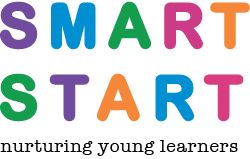Read along below!
Beginner biologists learned all about the human body through an assortment of lessons. Skeleton sticker sheets, X-Rays and pretend play costumes assisted in teaching the different organs and functions. In addition, the classic game, “operation” was played.
A microscope and slides were used to view various specimens up close. Leaves, feathers, fur and more. All were amazed to find tiny spots and bugs that could only be seen when using the microscope.
Classroom chemists geared up in aprons and safety goggles to conduct a staple science experiment: volcano eruption!
Here are the materials & steps:
(Mini water bottle, brown coffee filter, markers, baking soda, vinegar, red food coloring, beaker & test tube)
-Empty mini water bottle
-Color volcanic ash on brown coffee filter
-Cover water bottle with filter (cut off top)
-Pour in baking soda (in test tubes)
-Add red food coloring to vinegar/ “lava” (in beaker)
-Pour in vinegar and watch eruption!
Students were excited to create school-made slime! This sensory experiment involved mixing cornstarch and dish soap until desired texture was achieved.
Peers practiced writing letters, numbers and shapes using invisible ink markers. Friends were fascinated when they colored over their papers and the drawings magically appeared. We explained how the ink is colorless until it is colored over with citric acid.
The group circled outside for a science story time. The influential scientist, Albert Einstein was introduced along with various instruments used for research: magnifying glass, beaker, test tube, petri dish etc. Afterwards, friends had fun taking photos with the scientist board.
The class brought to school items representing different branches of science for the annual “Science Fair.” Exhibits included a telescope (astronomy) dinosaurs (paleontology), a crystal (geology), a koala (zoology), seeds (botony) and more! All explored each exhibit using magnifying glasses and inquisitive minds.



































